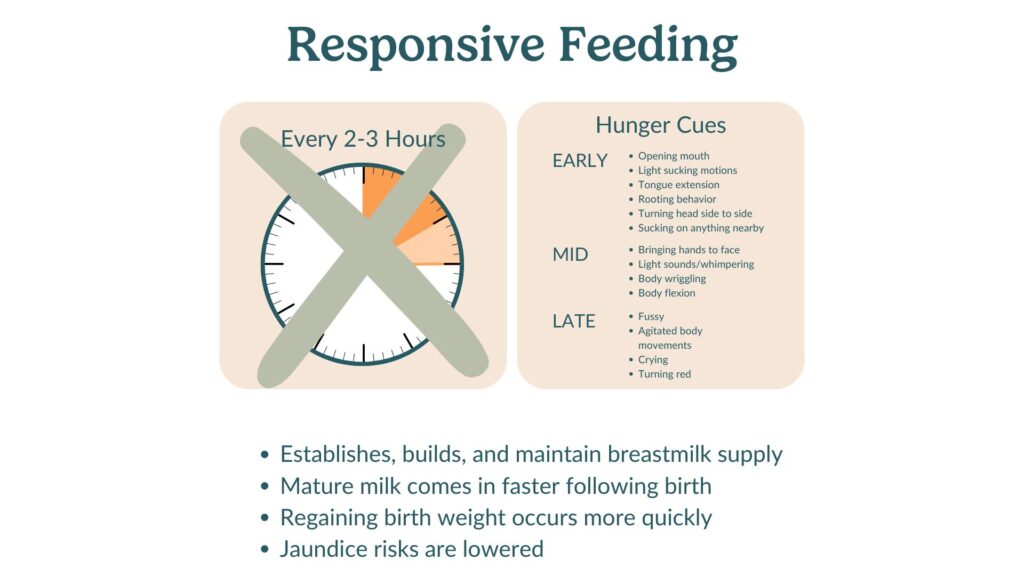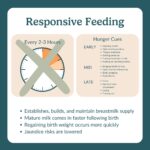responsive feeding

Responsive feeding
Responsive feeding, also known as on-demand feeding, involves feeding your baby based on their hunger and fullness cues rather than on a fixed schedule. This approach helps ensure that your baby gets enough nutrition and supports their natural feeding patterns.
What to watch out for
It’s important to recognize your baby’s hunger and fullness cues and understand how to manage responsive feeding. Here are some considerations and tips:
- Hunger cues: Look for early signs of hunger, such as rooting, sucking on hands, lip smacking, and becoming more alert and active. Crying is a late hunger cue, so try to feed your baby before they become distressed. If your baby does become distressed, focus on calming them down before offering a feeding. Learn more about hunger cues.
- Fullness cues: Watch for signs that your baby is full, such as slowing down sucking, turning away from the breast or bottle, and appearing relaxed or content after feeding.
To practice responsive feeding, consider these tips:
- Feed on demand: Offer the breast or bottle whenever your baby shows signs of hunger, rather than sticking to a strict schedule.
- Stay attentive: Be responsive to your baby’s cues during feeding sessions. Allow them to set the pace and duration of the feeding.
- Comfort and reassurance: Provide plenty of cuddles and comfort during and after feeding to help your baby feel secure and loved.
- Adjust as needed: Your baby’s feeding needs may change during growth spurts, illness, or developmental milestones. Be flexible and adjust your feeding approach accordingly. On average, an infant should be eating about 8-12 times a day. Learn more about growth spurts.
Physical limitations or health circumstances
Certain conditions can influence the need for responsive feeding:
- Low milk supply: Feeding on demand can help stimulate milk production and ensure your baby gets enough milk. Learn more about low milk supply.
- Premature birth: Preemies may have different feeding needs and may benefit from more frequent, responsive feedings.
- Reflux: Babies with gastroesophageal reflux (GER) may feed more comfortably with smaller, more frequent feedings.
Other terms
Understanding related terms can help you better manage responsive feeding and related practices:
- Hunger cues: Early signs that your baby is hungry, such as rooting, sucking on hands, and becoming more alert.
- Fullness cues: Signs that your baby is full, such as slowing down sucking, turning away, and appearing content.
- On-demand feeding: Feeding your baby whenever they show signs of hunger, rather than on a fixed schedule.
- Lactation consultant: A professional who can provide support and guidance on breastfeeding and feeding issues.
- Feeding patterns: The natural rhythms and routines of your baby’s feeding behavior, which can change over time.


